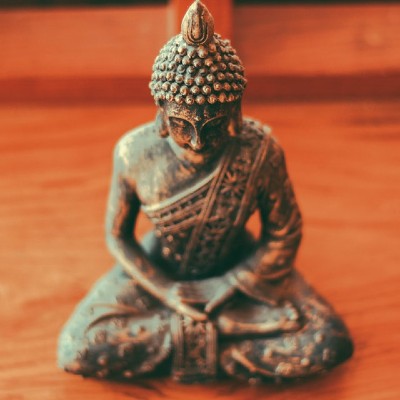For the last two months, my now 7-month-old child has woken me up around 4:20 a.m. I’m lucky if I get five hours of sleep a night. I am exhausted.
All of the effects of low sleep are painfully apparent. I’ll put the box of Cheerios in the refrigerator or forget to put my daughter’s shoes on before we go out for a morning walk. Trying to complete a 10-minute work task may take 30 minutes because I follow every impulse to get a snack, text a friend, step outside, or find a new exciting song on Spotify. But the most harmful effect is that I am more irritable. I struggle to be gentle, kind, and non-reactive in some of the most important relationships in my life.
Despite the fact that I have spent years studying, practicing and teaching the Dharma, when I am faced with these lowest moments, I don’t use body scans or breath concentration. In fact, I don’t use any teachings that I learned from this tradition. I turn to prayer. For many years, this incongruity disturbed me. How could I teach the Dharma but turn to something entirely different when I was most in need? Recently, however, I’ve come to see that prayer, as I have learned it, contains within it all of the elements of the Buddha’s core teachings.
For anyone who has tried to meditate when they are completely exhausted, it will come as no surprise that this practice does not work well for new parents. It’s not just modern science that has warned us of the effects of low sleep; the Buddha also admonished his followers that a mind without sleep cannot be developed.
Without the ability to steady the mind, I start to feel trapped by the negative thoughts. I remember that the Buddha described the home life as noisy and dusty and that he himself did not stick around to take care of his own family. If my mind is really dark, I’ll start to think of life in terms of two bleak choices: leaving my family so that I can attain some level of mental stability and kindness; or staying with my family and being a scattered, grumpy mess. I search my mind for something to hold onto, and it feels like all of the practices and wisdom I have learned are stored on mental shelves behind a thick wall of plexiglass.
But, the one thing that I can reach in these moments is prayer. I learned to pray in addiction recovery programs, when I was first trying to break a pattern that felt embedded in my soul. I say prayers with the word “God’ in them, because I learned that if I ask for help from somewhere outside myself, I can keep doing what needs to be done, even when it feels impossible.
It took me a while to understand how praying like this aligned with the teachings of the Buddha. I was initially under the impression that Buddhism was strictly atheistic – a common misconception in the West – and that my prayer was a weakness that I snuck in when [KG2] Buddhism wasn’t quite working for me. Once I started reading Theravadan texts, I realized that the suttas are full of descriptions of gods, people praying to them, and even heaven and hell, but that did not assuage my deeper concern that what I was doing didn’t align with the teachings of the Buddha. Thankfully, this is not the case.
I’ve never understood the concept of God. When I pray, I have no idea who or what I pray to, and it’s never seemed to make a darn bit of difference. What happens when I pray is that I accept, all the way to my core, that life has presented me with a situation that is unmanageable. It is a recognition that I am suffering and I cannot escape. In this moment of admitting complete defeat, I am staring right into the First Noble Truth, which is that pain and stress are an inherent and inescapable part of human existence.
The next thing that happens when I pray is that I let go of the notion that I have the answer. I let go of the belief that my thoughts or my actions can spare me from the suffering I am experiencing. I stop trying to manage the unmanageable and control the uncontrollable. When I do that, I find freedom that allows me to exist in a world of suffering without being bound to it. This, of course, is precisely what the Buddha taught. This is the lived experience of the Second and Third Noble truths, which are that attachment is the cause of suffering, and that there is an end to suffering.
The last thing I do when I pray is ask and listen for guidance about the next right action, a term often used in recovery communities. As it turns out, the next right action is always a step on the Noble Eightfold Path. It might be saying something gentle (right speech) or seeing the selfless nature of suffering (right view) or doing something generous (right action). The next right action is the lived experience of the Fourth Noble Truth. It is the way to the end of suffering.



